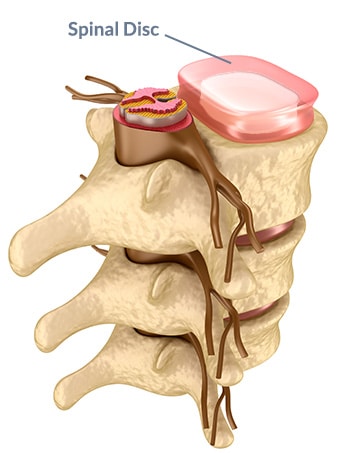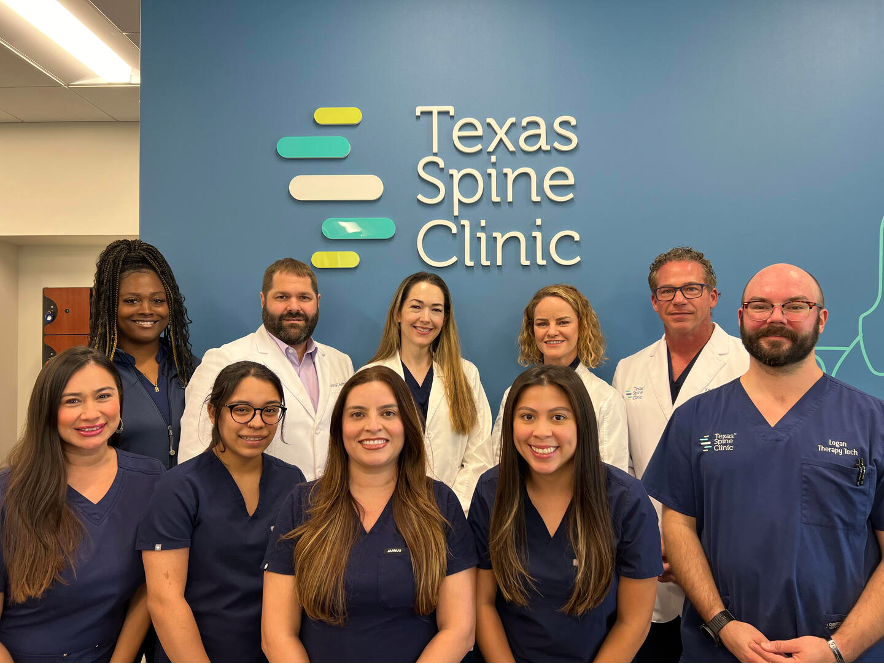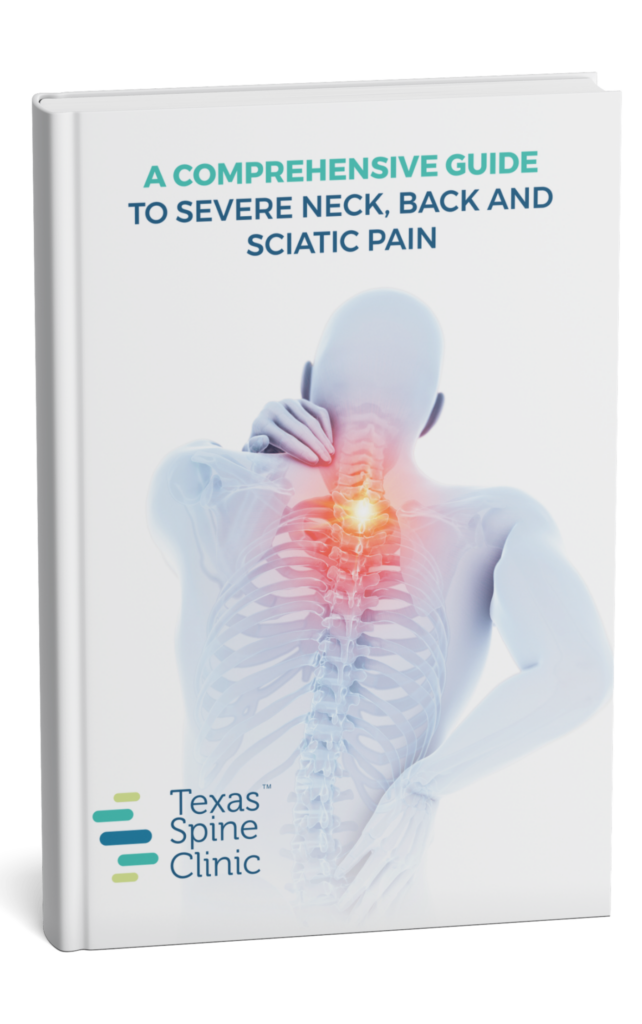Degenerative Disc Disease Treatment in San Antonio, Texas
What is a spinal disc made of?
The disc consists of two parts:

Nucleus
The center, referred to as the nucleus pulposis, is comprised of a gelatinous matrix similar to jelly.
Matrix
The matrix is made of mostly water. The outer covering that keeps the nucleus intact is called the annulus fibrosis, which is made of crisscrossing fibers.
The disc itself consists of about 88% water, but as we age, the disc begins to lose water which flattens and thins the disc. This is known as disc degeneration.
Request an Appointment
Please fill out the information below & someone from our team will contact you to confirm your visit.
What causes degenerative disc disease?
The reduction in the size of the “nerve hole” creates irritation and causes an inflammatory process. The result is a myriad of effects that include inflammation of the nerve, inflammation of the surrounding tissue, muscle spasms, and pain. It is also possible to develop pain from the degenerative disc known as discogenic back pain. Discogenic back pain can be one of the most difficult types of back pain to treat unless you have a method to treat the disc itself.
What are the symptoms of disc degeneration?
Depending on the severity of the herniation or bulging, a patient may experience a variety of symptoms, including:
- Localized back pain
- Leg pain or burning
- Numbness
- Tingling
- Muscular weakness
Suffering from degenerative disc disease?
Find out if our team of specialists can help you get relief from your pain today. Call 210-741-9166 and schedule an appointment to see which treatment is right for you.


